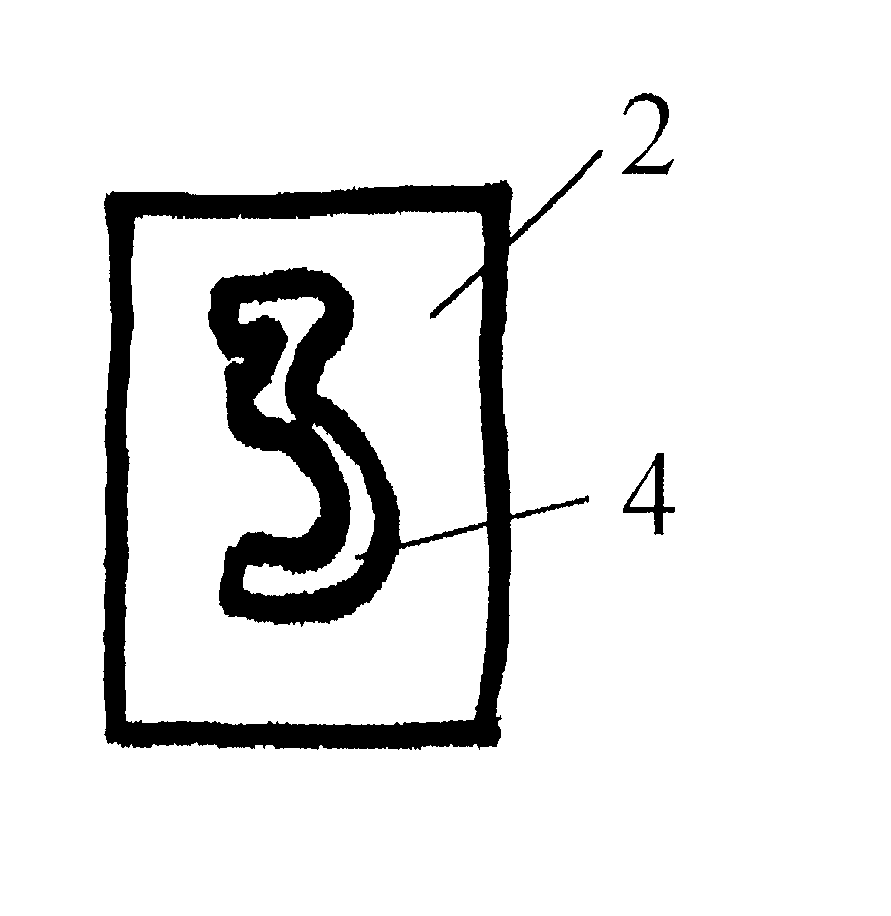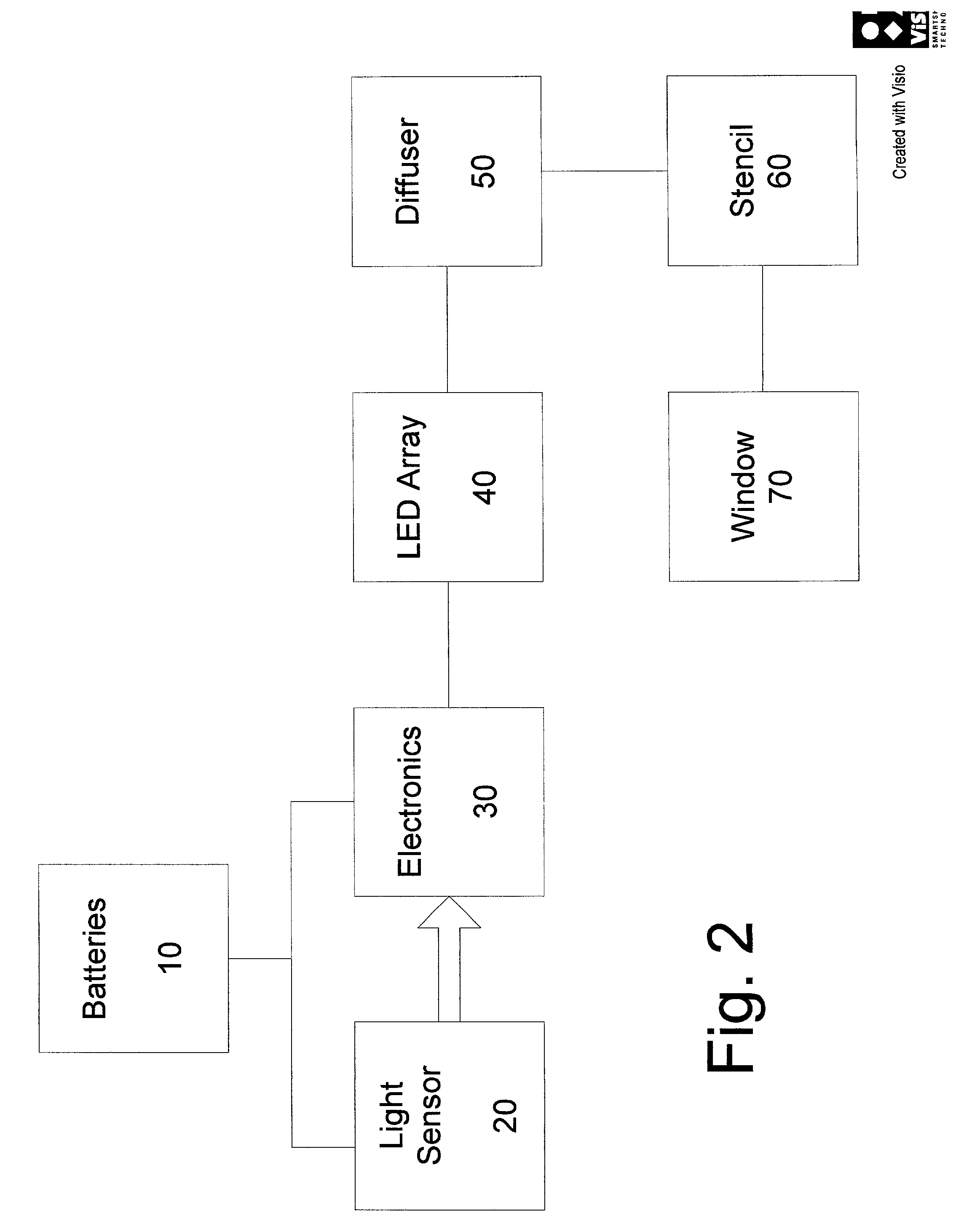Electronic illuminated house sign
a technology for electronic illumination and house numbers, applied in the direction of illuminated signs, display means, instruments, etc., can solve the problems of high purchase price, high maintenance and replacement cost, and devices that do not provide a numbering visible during the day
- Summary
- Abstract
- Description
- Claims
- Application Information
AI Technical Summary
Benefits of technology
Problems solved by technology
Method used
Image
Examples
Embodiment Construction
[0076] Referring now to FIG. 2, a block diagram of the device is depicted. Batteries 10 provide continuous standby current at very low levels to a light sensor 20 that is monitored by a low power CMOS threshold circuit, which is part of the electronics 30. The battery(s) 10 also continuously powers the threshold portion of the electronics. The standby current is in the microampere range and only reduces the battery energy and life by a very small amount. When the threshold circuit detects that the light on the light sensor falls below a preset value, the threshold circuit activates power to the rest of the electronics, which energizes the LED array 40. The light from the array passes through a diffuser 50, which makes the light source appear more uniform. The light from the diffuser 50 passes through a stencil 60 that forms numbers, and / or letters in the transmitted light. The light then passes through a transparent window 70 that is used to protect the interior from the weather.
[00...
PUM
 Login to View More
Login to View More Abstract
Description
Claims
Application Information
 Login to View More
Login to View More - R&D
- Intellectual Property
- Life Sciences
- Materials
- Tech Scout
- Unparalleled Data Quality
- Higher Quality Content
- 60% Fewer Hallucinations
Browse by: Latest US Patents, China's latest patents, Technical Efficacy Thesaurus, Application Domain, Technology Topic, Popular Technical Reports.
© 2025 PatSnap. All rights reserved.Legal|Privacy policy|Modern Slavery Act Transparency Statement|Sitemap|About US| Contact US: help@patsnap.com



